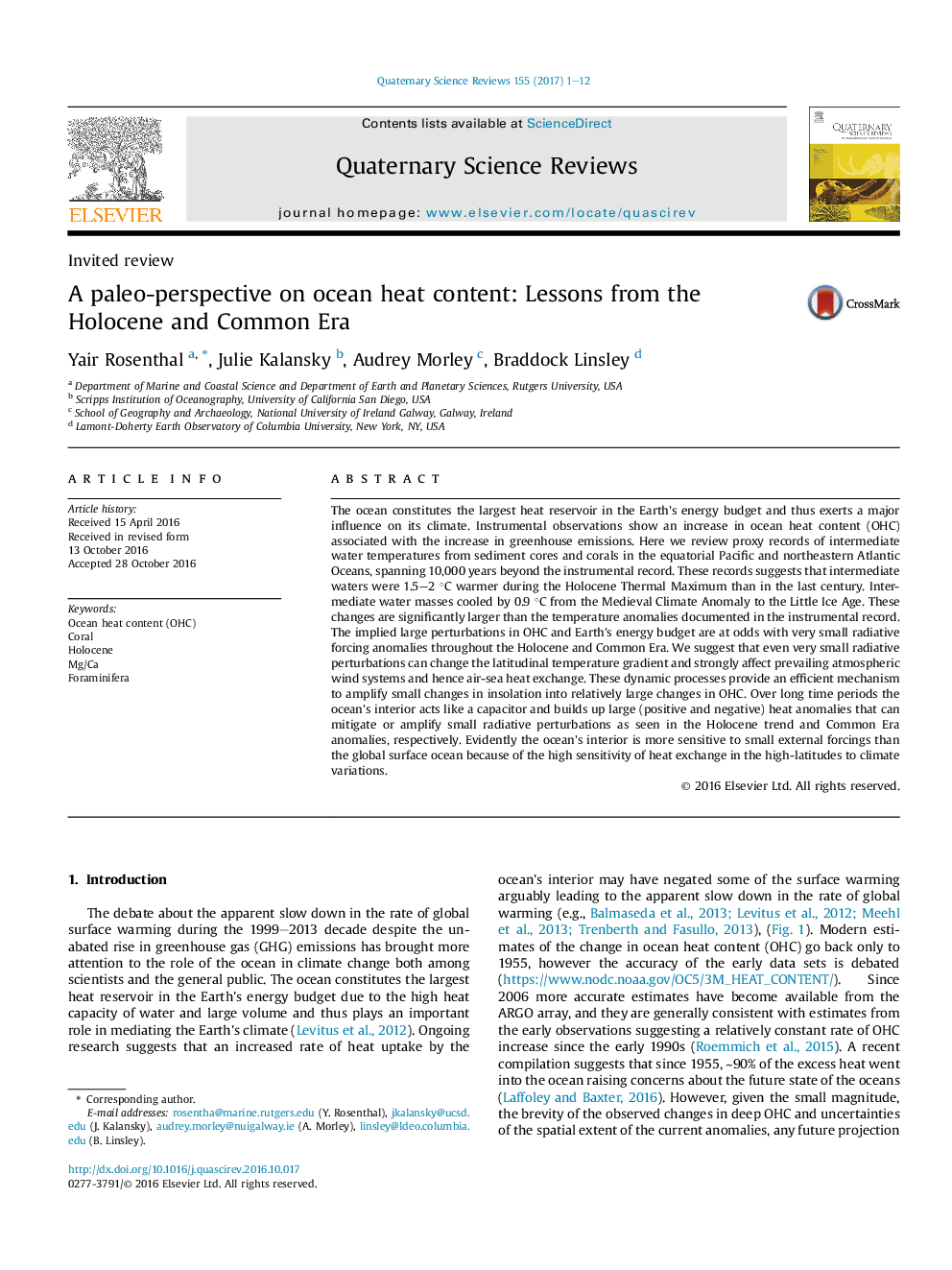| Article ID | Journal | Published Year | Pages | File Type |
|---|---|---|---|---|
| 5786835 | Quaternary Science Reviews | 2017 | 12 Pages |
Abstract
The ocean constitutes the largest heat reservoir in the Earth's energy budget and thus exerts a major influence on its climate. Instrumental observations show an increase in ocean heat content (OHC) associated with the increase in greenhouse emissions. Here we review proxy records of intermediate water temperatures from sediment cores and corals in the equatorial Pacific and northeastern Atlantic Oceans, spanning 10,000 years beyond the instrumental record. These records suggests that intermediate waters were 1.5-2 °C warmer during the Holocene Thermal Maximum than in the last century. Intermediate water masses cooled by 0.9 °C from the Medieval Climate Anomaly to the Little Ice Age. These changes are significantly larger than the temperature anomalies documented in the instrumental record. The implied large perturbations in OHC and Earth's energy budget are at odds with very small radiative forcing anomalies throughout the Holocene and Common Era. We suggest that even very small radiative perturbations can change the latitudinal temperature gradient and strongly affect prevailing atmospheric wind systems and hence air-sea heat exchange. These dynamic processes provide an efficient mechanism to amplify small changes in insolation into relatively large changes in OHC. Over long time periods the ocean's interior acts like a capacitor and builds up large (positive and negative) heat anomalies that can mitigate or amplify small radiative perturbations as seen in the Holocene trend and Common Era anomalies, respectively. Evidently the ocean's interior is more sensitive to small external forcings than the global surface ocean because of the high sensitivity of heat exchange in the high-latitudes to climate variations.
Keywords
Related Topics
Physical Sciences and Engineering
Earth and Planetary Sciences
Geology
Authors
Yair Rosenthal, Julie Kalansky, Audrey Morley, Braddock Linsley,
